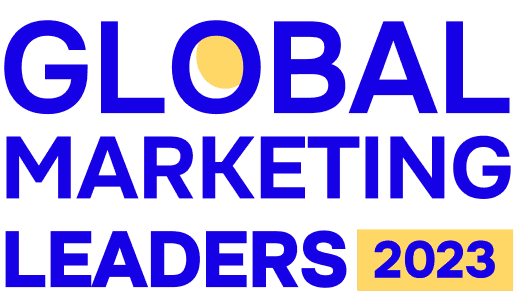Master the Art of Content Marketing with Niti Kumar: Tips, Tools, and Future Ideas.
In this talk, we chat with Niti Kumar, COO at Starcom India. She is a skilled marketing expert with years of experience. She has worked with many global brands. She shares her thoughts on content marketing topics like clear objectives, technology, and AI. She also talks about her vision for a perfect content marketing stack.
She goes on to highlight the importance of clear expectations and goals in content marketing. She shows how it affects content's overall impact. This relates to first principle thinking and the concept breaks complex problems down into basic ideas. By making sure expectations are set right, it's easier to figure out the rest of the puzzle. This makes content that connects with the target audience. She also looks into the current state of content marketing and explores the roles of technology and AI in shaping plans and actions. She says that while tools are used at different levels, there is still much room to grow.
1. Can you tell us about your journey in the advertising industry? How has it shaped your career?
I've been in the advertising industry for about 20 years. I call myself born and brought up in the marketing, content, and media space. I did my Master's in media planning at MICA and have since worked with agencies like Mudra, MediaCom, and Penguin as the marketing head for two years. I have been at Starcom for the past couple of years. The most interesting aspect of my journey has been the wide variety of brands I've worked on and the different talents I've worked with. They have been very rational, 'Excel Sheet'-driven individuals who are very creative, insight-led thinkers.
2. Content is so subjective. As a content marketer, what are the major pain points you face today?
There has been a lot of evolution in terms of the data that is available, but the biggest pain point is still around measurability. It's difficult to determine the exact role of content marketing on a brand and its incremental value over paid media. The role content plays and how to measure it remains a grey area. In addition to this, defining good content and ensuring quality is another area where work can be done, as it's not as black and white as one would like it to be. Content quality often comes down to individual sensibilities. I think we need to define quality, that is, the division between 'this is good' and 'this is not'.
To add on, addressing content quality and measurability involves a combination of expertise, experience, and flexibility. We often rely on our knowledge of what has worked in the past, the experiences of marketing teams or marketing heads, and quick dipstick assessments to make informed decisions. While it's not an exact science, we continuously work on refining our approach and building best practices to create content that connects with the TG and delivers measurable results.
3. In the context of quality in content, how can we create something that brings us closer to the expected results? What does an ideal content piece look like in today's world? What are your expectations for a single content piece, such as a video or blog?
An ideal content piece should be brand-first, addressing its purpose fundamentally. That should always be the starting point. Simplicity is key. It helps to deliver the message quickly and engage the user effectively. One should aim to land your message in the first 10 seconds. The content should be easily distributable, as far as format and length for the TG are concerned. For instance, a 4-minute video would be tough to consume for any TG today. Lastly, it should be engaging and relevant from the TG's perspective. So, these 4 aspects - brand alignment, audience relevance, distribution, and execution - form the basis of a strong content piece.
4. How do you approach an ideal content strategy for brands in the FMCG industry? How do you ensure alignment between content creators and brands when it comes to success measures and ROI?
FMCGs are products that you use daily. So, consumers tend to be brand loyal. The content should be put out at scale, as ROI comes from reaching a wide audience. For example, a year back, a series for Dabur Honey with celebrity chef Sanjeev Kapoor subtly used honey in recipes. It provides scale via 3 levers - through the celebrity, the TV medium, and the brand integration. However, it is essential to recognize that there's no 'one size fits all' solution for content strategy. Something that breaks the rules might also work. The approach must be brand-led, considering success measures and ROI. We also did 'Bollywood Trails' with Discovery. A celebrity drove a Jeep car, which is an iconic brand, through rough terrain. So, the product here is the heart and center. At the end of the day, alignment of the content with the brand's expectations is critical. Defining success measures and ROI before starting a content project is crucial. Both content creators and marketers should have a clear understanding of the expected outcomes from the content piece. It helps prevent discrepancies in perception. It ensures that the content created meets the brand's objectives while competing with performance marketing for every dollar invested.
5. What does the present content approach look like? What percentage of AI are we using currently? What roles do technology and AI play in content marketing today?
AI is a space where a lot of work needs to be done. We are not using enough of the tools that are openly available in the market. It is still a work in progress. Tools are not leveraged enough. The present approach uses tools at two levels: insights and content analysis. At the insights level, tools are used to understand the audience better, to understand what drives them. Also, to determine what kind of content works best for them. At the content analysis level, customized tools help identify the types of content that consumers are engaging with and reacting to positively. For example, when I was at Penguin, there were conversations about whether we could use an AI tool that could read through a manuscript. It would then decide whether that book would be sellable or not. However, AI is not yet actively used in content marketing. There is still significant room for improvement in terms of tool usage.
6. Let's say you had God-mode power. What would an ideal content marketing stack look like? How would you incorporate AI and other advanced technologies into it?
In an ideal world, a content marketing stack would balance speed and efficient delivery with creative thinking. It would involve a dashboard where one could input the target audience, brand attributes, and desired tonality. This dashboard would analyze audience profiles, past content they have engaged with, and preferred influencers and celebrities. If it would also provide examples and case studies for content creation in one place, it would make life so easy. This is an idealistic scenario, but it represents a vision of how AI and advanced tech could potentially streamline and improve content marketing.
"In an ideal world, you want to balance speed and efficient delivery with admirable creative thinking. If I could input the target audience, brand attributes, and desired tonality, the dashboard would then deliver samples of work based on the audience profiles and past content and influencers they have engaged with "

